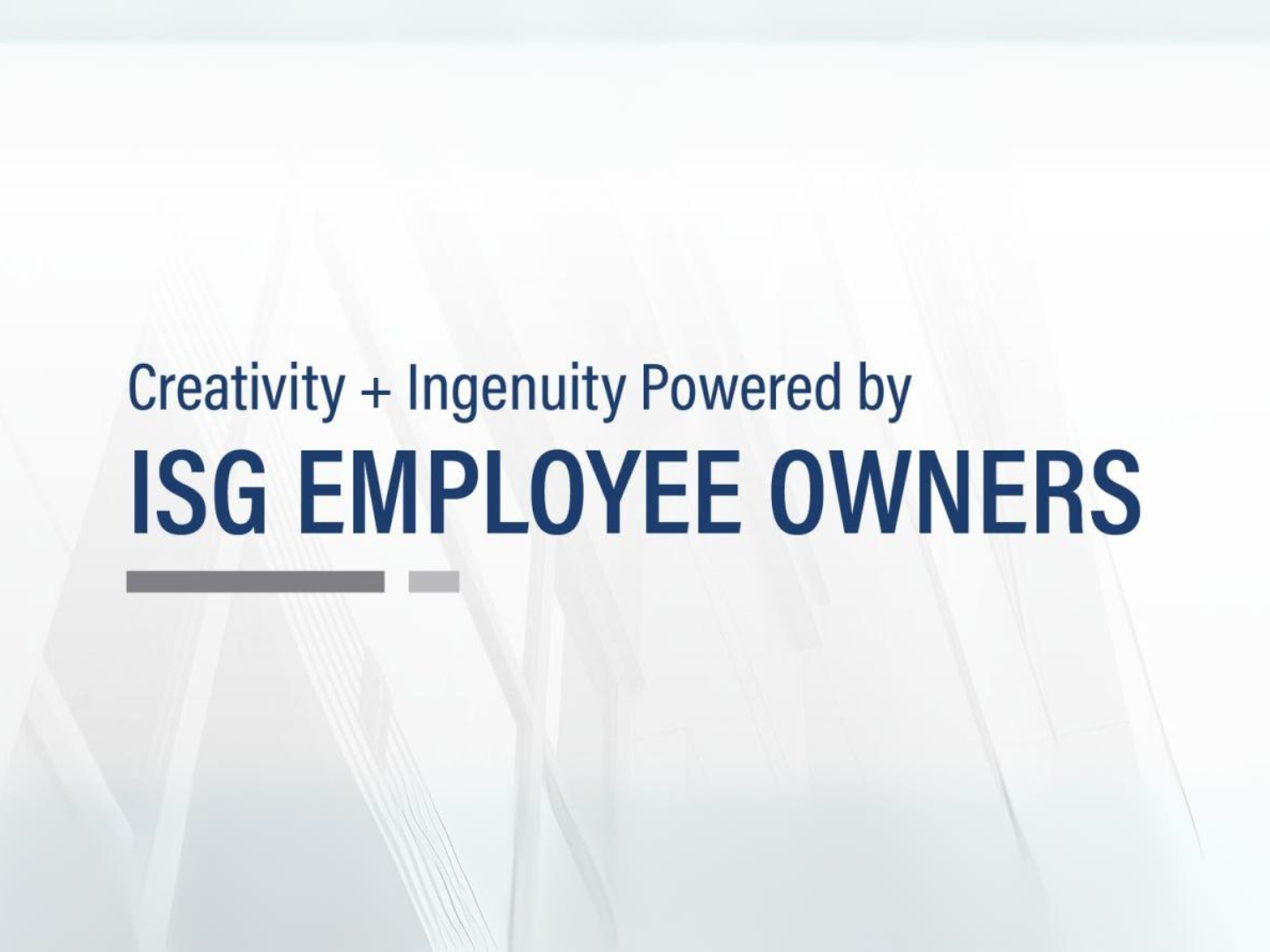Meet Landscape Architect Danyelle Pierquet

Whether babysitting, mowing lawns, or whipping up lattes, everyone can remember the excitement of their first job. Typically, these first forays into the workforce are just a way to earn a couple of bucks that fade out with the new opportunities offered by age, education, and time. But, for ISG Landscape Architect Danyelle Pierquet—who at age 12 started working at a landscape nursery—her first job turned out to be an important career pathfinder. Now, when she’s not designing landscapes, you can find Danyelle admiring them as she explores Green Bay, the Midwest, and the world with her husband, daughters, and puppy.
Did you know from age 12 that you were going to be a landscape architect?
Not quite—although my first job away from my family farm was at a landscape nursery, and the female owner suggested I pursue landscape architecture. I was interested in news/radio broadcasting and actually started studying it in college. It was a good experience and developed some vital communication skills, but I soon realized that the extremely low pay, odd hours, and incessant need to move across country was far from ideal for me. That’s when I thought back to landscape architecture and decided to explore it more. The blend of art and science in the profession interested me and I’ve been doing it ever since.
What is it about the Architecture and Engineering field that intrigues you?
There is an elegance in adding meaning to folks’ everyday lives that has always appealed to me. I remember learning about the meaning of the Lincoln Memorial’s design and then truly understanding the “why” of design. We aren’t all interacting with the likes of the Lincoln Memorial on a daily basis, but I try to make the everyday experiences we have better by adding delight, comfort, and “invisible” safety to whatever work I’m doing.
How do art and science work together in landscape architecture?
Landscape architecture is essentially design engineering. We are trained and licensed to design sites (minus the utilities). However, the value of landscape architecture, to me, comes in how individuals take that knowledge and add art, psychology and sociology to create places that resonate with people—places to recreate, contemplate, celebrate or even protest.
Whether we are master planning the walkable streetscape and plazas at a regional shopping center, a trail system throughout a community, or a single monument setting where we pay homage to lives lost; landscape architects analyze the context of the site and the project program to ensure the scale, materiality, safety, comfort, and beauty of the place is well considered.
Other than the Lincoln Memorial what designs have inspired you?
I love urban travel, history, and high-quality old things, so I have a stupid amount of snapshots of these from cities throughout the country. Thanks to my “super power” StrengthsFinder 2.0 strengths (Arranger, Input and Strategic), the photos are well-organized and I frequently reference them when I’m seeking inspiration. Not only from big cities like Tokyo, LA, Boston, Miami, New York, Chicago, and Milwaukee—there are also photos from the project sites I’ve visited throughout the country and all the places in between. I capture everything, whether it’s the stone detailing on main street buildings in St. Peter, Minnesota or the smooth stone paths and moon doors in small Japanese gardens in Kyoto, Japan.
It is delightful to “discover” an especially refined composition in an unassuming place. Currently my favorite discovery is the Third Ward District of Milwaukee. There are some excellent building entries, signs, and even a great boardwalk with metal insets that dialogue about the adjacent river elevation.
You’ve talked about places that inspire you—how about who inspires you?
The people that have been the most memorable to me have been a handful of people I’ve met who have not been afraid to blaze a new trail for themselves. One started out as an elementary school teacher, then served as the governor’s appointee to the MPO. She now leads a non-profit supporting research and education on urban issues. She was my early-career mentor and a person who helped me find my voice. I appreciate her ability to see that life is happening now all around us, and that opportunities don’t always happen in a linear fashion.
What design advantages do you reap from working at a multi-disciplinary firm?
No profession is an island, so being aware of one’s strengths and those of our team—and having them all within an easy Skype conference, phone call, or instant message away—is dually great for any professional who wants to learn new things (who doesn’t?) and also for a project’s bottom line. I don’t need to have all the professionals within ISG on the project team in order to tap their collective knowledge. That horsepower is our value add—each single individual is backed by hundreds.
How do you work to enhance the services you provide ISG’s partners and clients?
I ask a lot of questions and investigate topics, clients, and potential projects so I can ask even more questions. Additionally, I am a nut about process and lists. Yikes, I probably have 4-5 templates in the works on various things I want to do better next time—proposal writing, project scoping, design details, and ordinances. They all get incrementally better with time. I’ve found that this seemingly small behind-the-scenes habit can have a large positive impact for clients.
How is A/E building a better world?
There is no single right answer to any question in A/E. As such, our collective professions have a lot of power and responsibility to make responsible and future-focused design decisions that solve problems long term. I’m working to better understand the products and site conditions I’m creating, so I can offer sustainable and durable solutions on my projects. I know I’m not alone, and I appreciate that effort in others as well.
Join the conversation #ISGGreen Bay #LandscapeArchitect #EmployeeOwned #ControlYourDestiny






Related Articles


Making Moves: The Benefits of Relocation
As ISG continues to grow and expand to new geographies, we want to share a few non-traditional benefits that have come with employee owners choosing to relocate. Culture transplants ensure that as we continue to grow, we stay true to our core values, mission, purpose, and culture, which not only benefits ISG employee owners, but our clients as well. This why we encourage relocation across all our locations.


Meet ISG Senior Graphic Designer Mallorie Schubbe
If you know Mallorie, you know that she is anything short of how she describes her fellow coworkers–friendly, helpful, humble, fun, and knowledgeable. For nearly eight years, this Senior Graphic Designer has been making an impact at ISG with her creativity and bright personality. What brought her to ISG and what is her favorite part about working here? If you guessed the people, Mankato’s patio, and projects, you’re halfway there.

Meet ISG Director of Marketing Abby Gram
As the leader of ISG’s robust marketing team, Abby Gram is a resilient creative force who is always ready for the next challenge. Read on to learn about ISG’s #Allin culture, some surprises about the marketing team, her time on the muddy Mississippi, and why she encourages others to “just keep swimming.”

Meet ISG Project Accountant Bill Bartz
As a Project Accountant and former Support Specialist, Bill Bartz continues to serve as an important link between projects and employee owners. Learn more about Bill’s journey to ISG, the importance of a first-class team, and get an inside scoop about the Green Bay office and some of Bill’s favorite post-work activities!

Meet ISG Civil Engineer Caleb Rasmussen
ISG’s Caleb Rasmussen is a steward for conservation through his role as a civil engineer. Focusing on surface water, Caleb works on the unique waterways of the Midwest to improve water quality and wildlife. Even though he spends much of his time outside while on the job, you can still find him enjoying the outdoors working with his livestock or spending time with his family.

Meet Civil Engineer Nathan Hermer
Before he knew what civil engineering was, Nathan Hermer enjoyed building things with Legos and making elaborate tracks for his matchbox cars. As he grew older, so did his enthusiasm for design. He soon realized his pastime could become his profession. Over the years, Nathan’s passions have evolved in and out of the industry. Read on to learn more about his hobbies, how he recharges, and his favorite part of working at ISG!


.svg)


